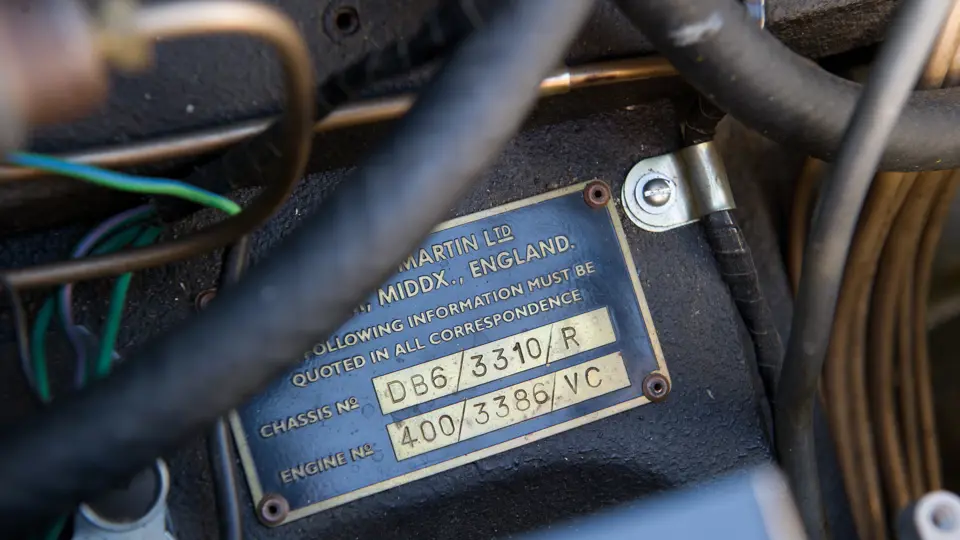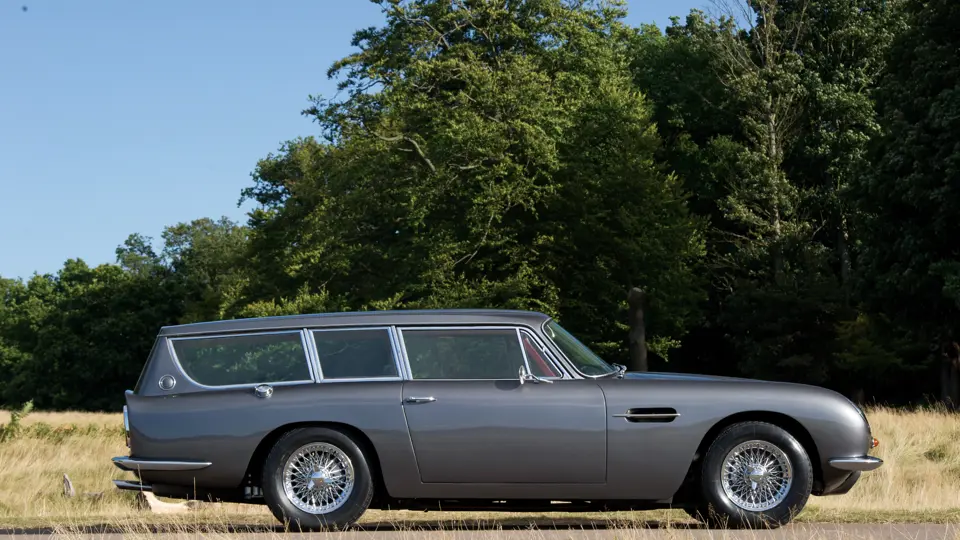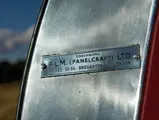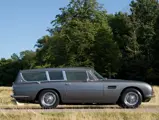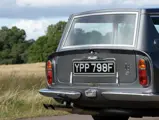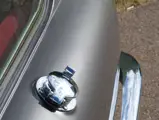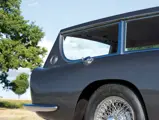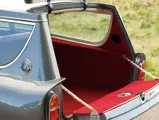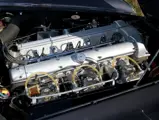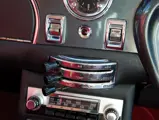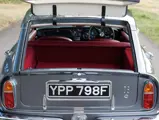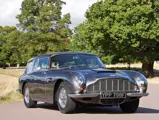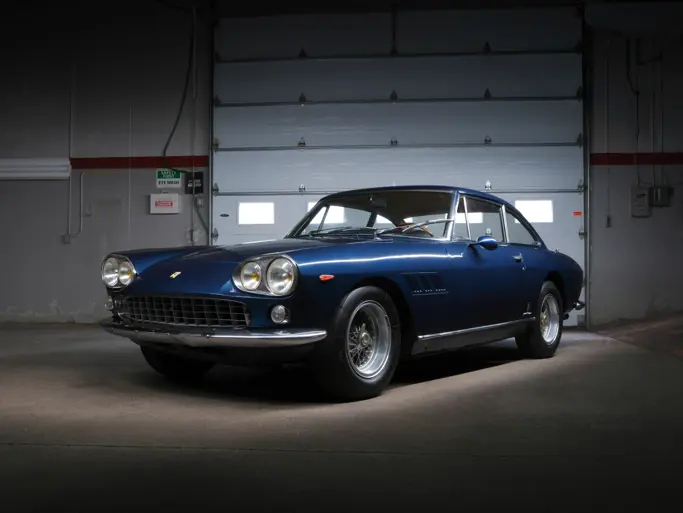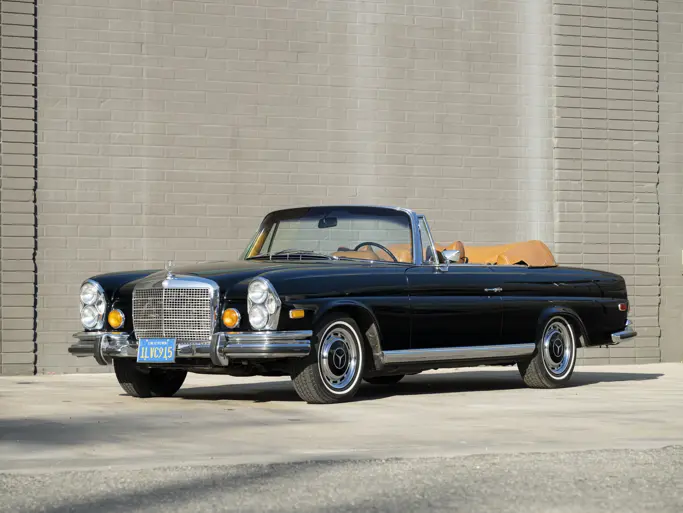282 bhp, 3,995 cc DOHC inline six-cylinder engine with triple SU carburettors, ZF five-speed manual gearbox, independent front suspension with upper and lower control arms, coil springs and anti-roll bar, live rear axle with coil springs, Watts linkage, and radius rods, and four-wheel hydraulic disc brakes. Wheelbase: 101.7 in.
• Purchased new by Innes Ireland
• One of only two DB6 shooting brakes built
• Complete restoration by Aston Martin Works Service
The origins of Aston Martin began as long ago as 1913, when engineers Robert Bamford and Lionel Martin opened a small, specialised workshop at Henniker Place, South Kensington in London. Initially, Bamford and Martin Ltd. rebuilt and converted Singer 10s after World War I. After Robert Bamford’s retirement, Lionel Martin obtained some financial backing from Count Zborowski and renamed the company Aston Martin Ltd.
Débuting in 1959, the Aston Martin DB4 benefitted from a new Tadek Marek-designed 3.7-litre DOHC alloy six-cylinder engine, which featured efficient hemispherical combustion chambers and a robust bottom end with seven main bearings. Variations of this torquey and versatile unit, later in 4.0-litre form, powered the DB4, DB5, DB6, and early DBS-model Aston Martins over the next 13 years. Of this distinguished lineage, the DB6 is increasingly appreciated today as the most refined and perhaps the most usable expression of David Brown’s gentleman’s grand-touring machine.
The DB6 continued the attractive covered-headlamp frontal treatment of the DB5, while the rear featured the distinctive and aerodynamically-efficient Kamm tail. Both the front and rear were updated with an elegant ‘quarter bumper’ treatment, which typifies the DB6 range. The chassis was extended to accommodate the finally useful rear seats, headroom was increased, and the body panels were, as always, of hand-formed aluminium construction. In all, just 1,321 DB6 coupés were built between 1965 and 1970, and their performance, style, and sophisticated driving dynamics contribute to their desirability among today’s marque enthusiasts.
Described as the “gentleman’s express”, the DB6 is unquestionably the ultimate development of the David Brown concept of the Grand Touring motor car. Famed competition driver and writer Jerry Titus stated in the April 1966 edition of Sports Car Graphic, “It is the most flexible, enjoyable Aston yet, in every way the handsome, luxury GT it should be…It offers luxury, comfort and safety and you can’t legally use top gear in the United States.”
As motor racing legend Innes Ireland wrote in the 15 August 1968 edition of The Autocar, “The ample boot was full to capacity with luggage for three people, and for the first time on a long trip, I was able to have an opinion on the rear seat comfort. In spite of the fact I had the Selectaride on the maximum and our cruising speed from Antwerp to Eupen was 120 mph, complete comfort prevailed.”
Ireland was a hugely successful F1 driver who also won the Tourist Trophy driving a Ferrari 250 GTO and campaigned a number of marques during his international racing career, including Lotus and Cobras, as well as having great success in GT40s and, of course, the Aston Martin DB4GT and project cars. Innes Ireland was the president of the British Racing Driver’s Club until his death in 1993. This Aston Martin DB6 Vantage, chassis number DB6/3310/R, was bought new by Innes Ireland in 1967. In 1969, Ireland took the car to coachbuilders FLM Panelcraft in London to be converted into one of only two shooting-brakes they produced on the DB6 chassis.
Today, this historically important motor car, which has not been seen in public since 1995, is finished in the most desirable colour combination of Metallic Oystershell with red hide upholstery. It has been subject to a complete ground up and fully documented restoration by Aston Martin Works Service. This magnificent vehicle has been virtually unused since the completion of the work and is offered with the benefit of the complete file of original restoration receipts from Aston Martin.


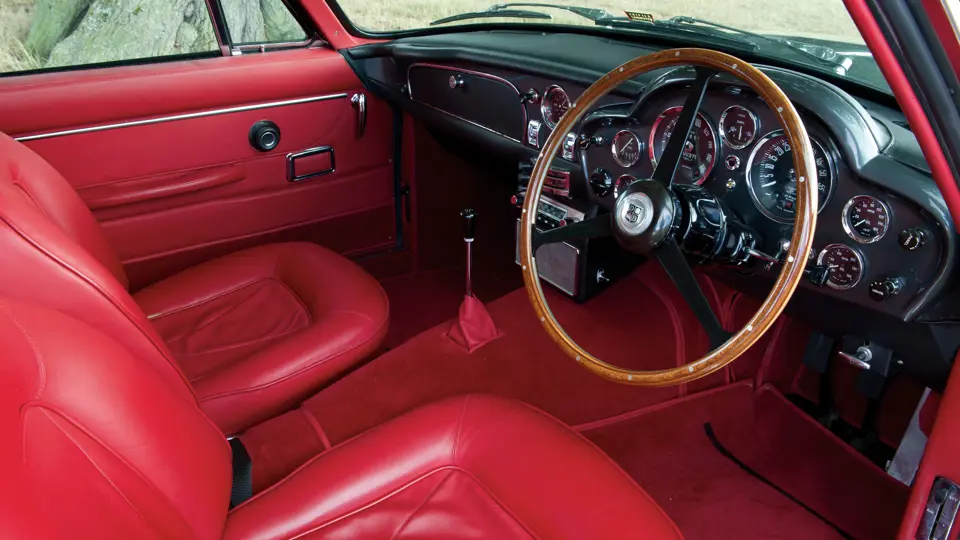

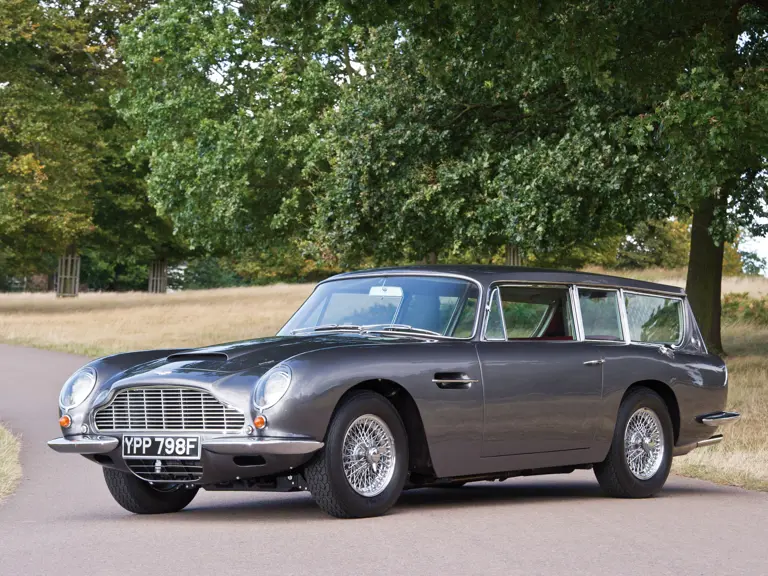

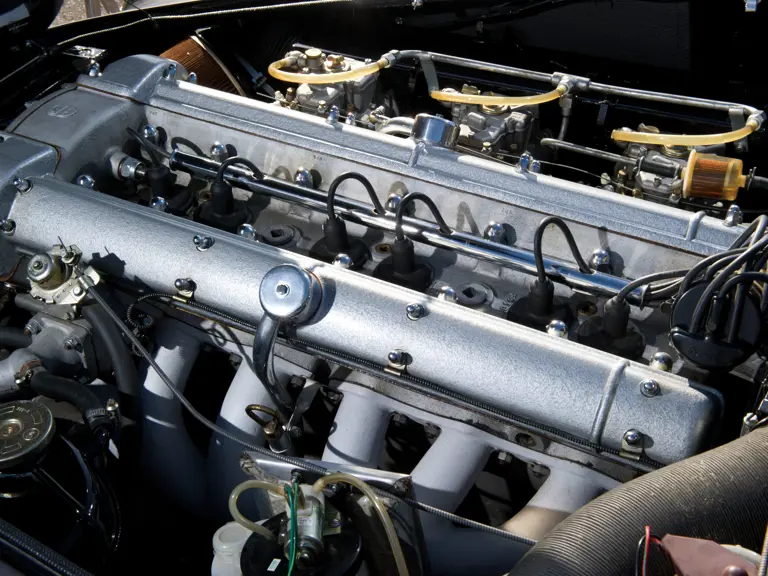
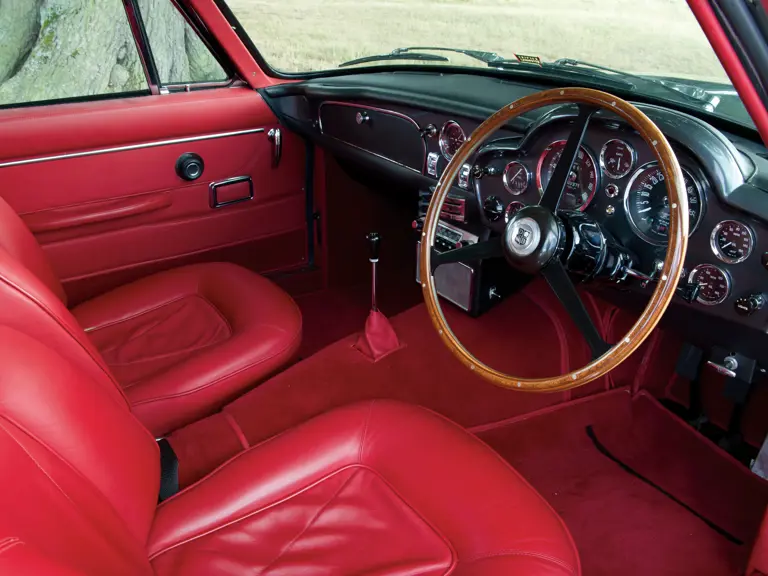
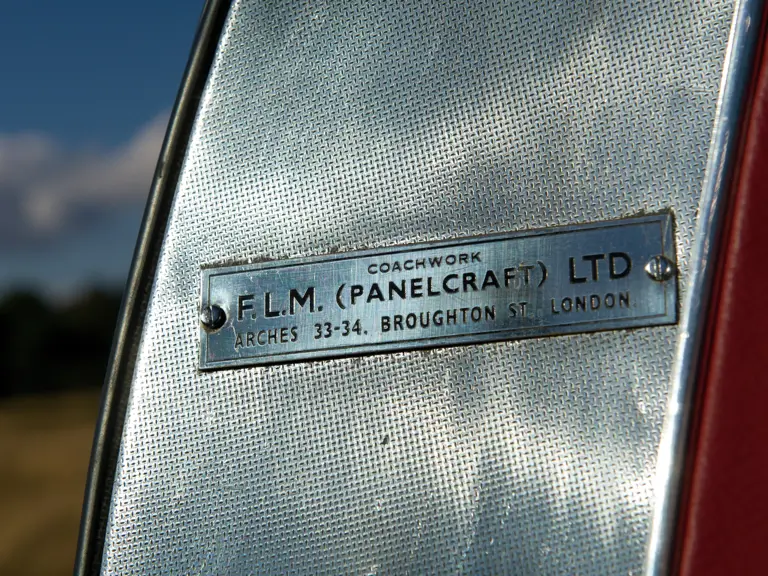
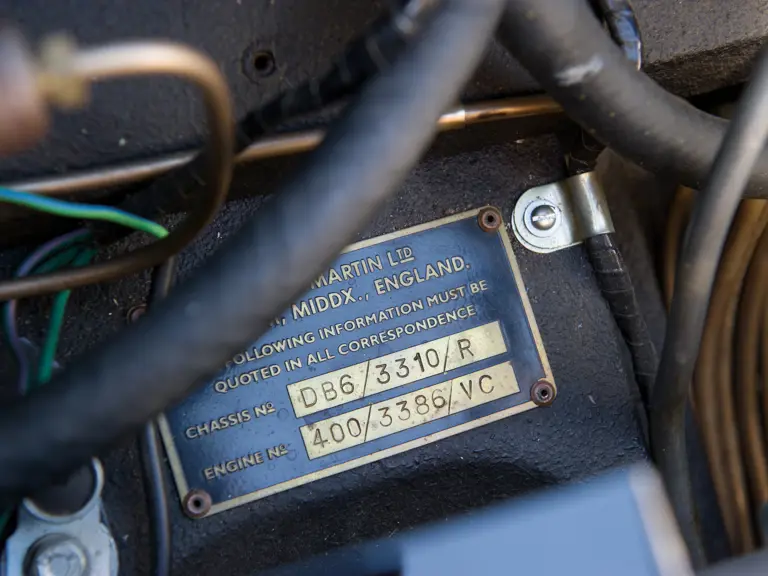

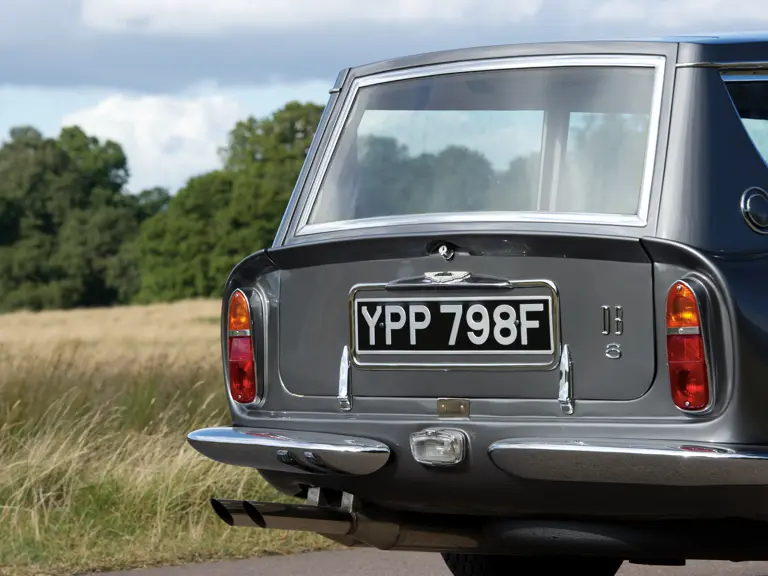
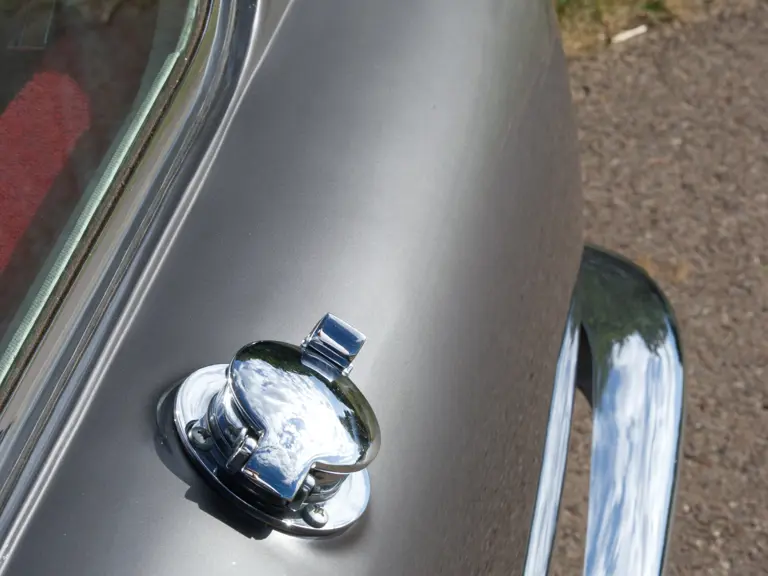
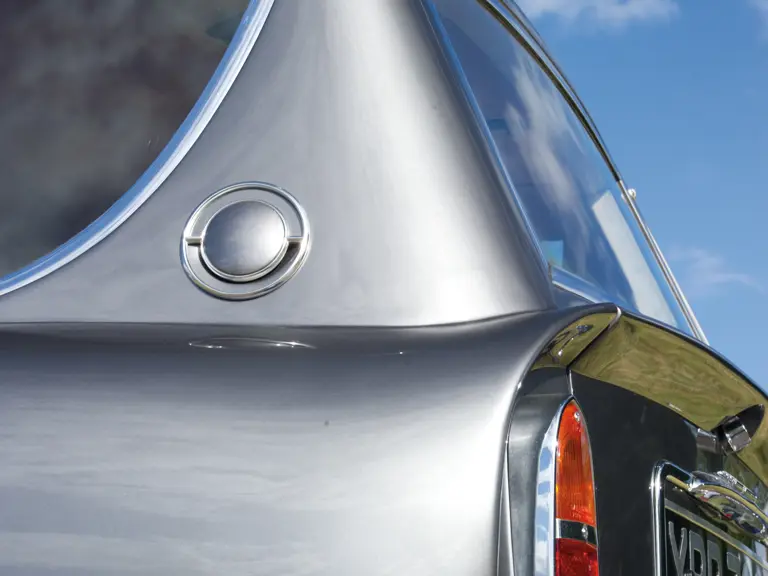
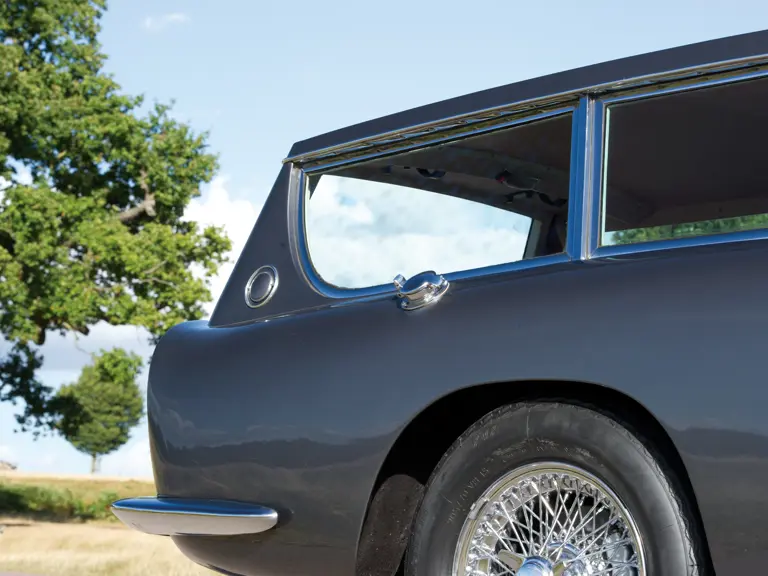

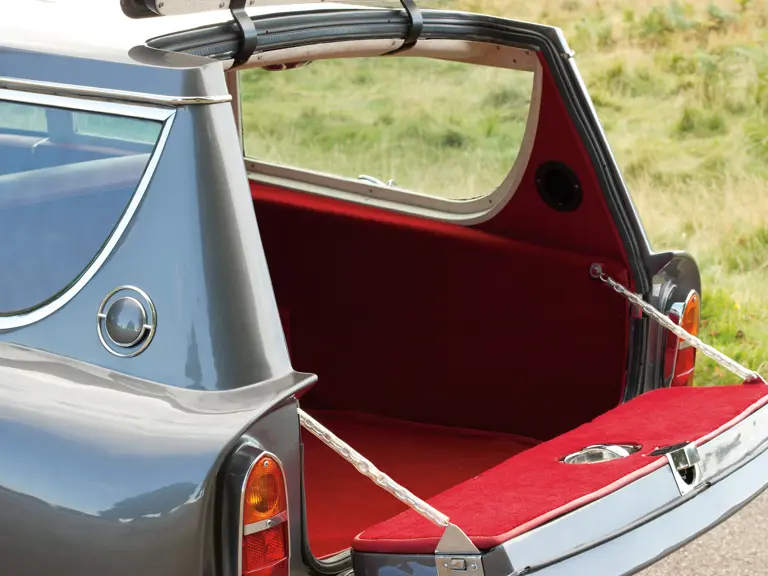

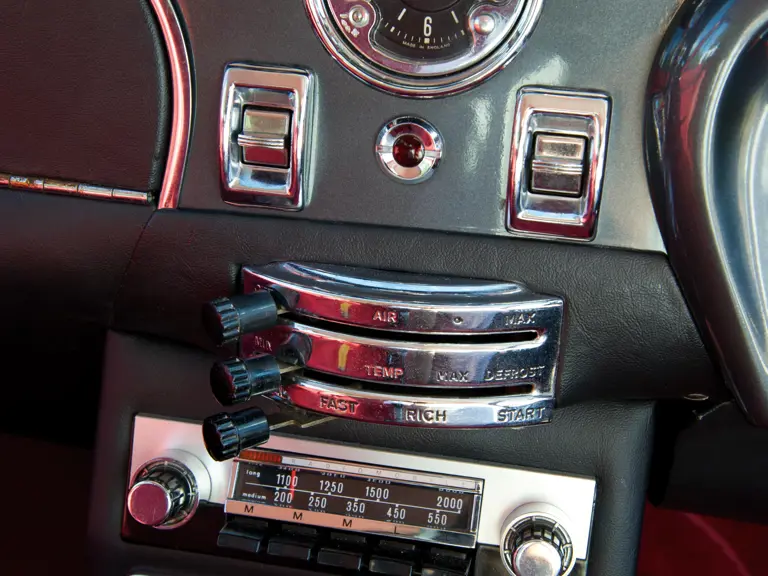
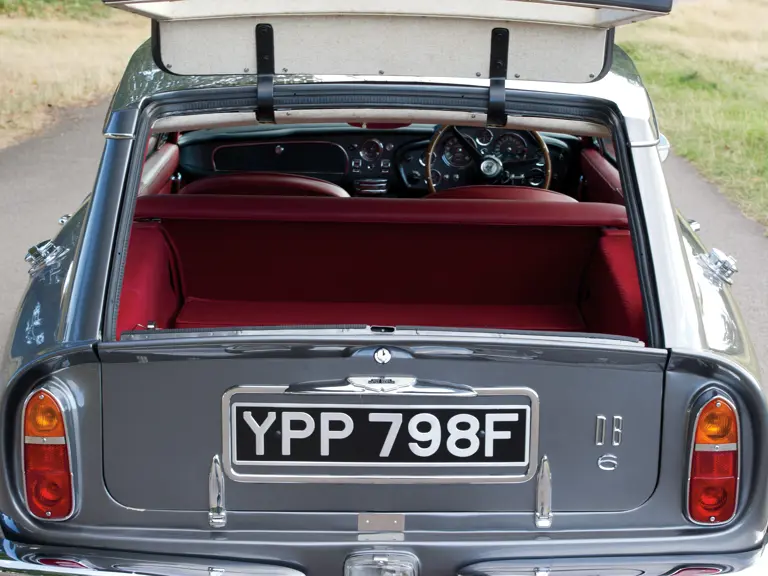


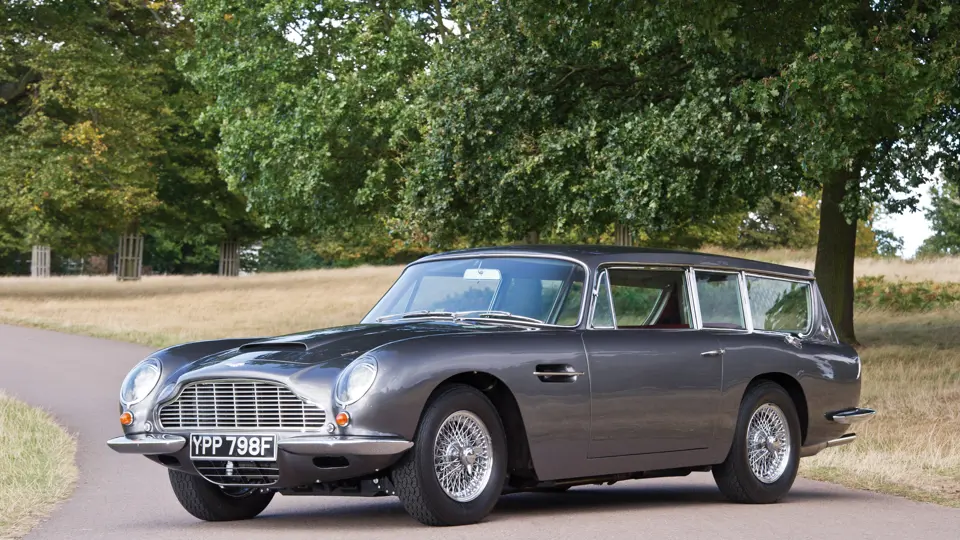
 | London, United Kingdom
| London, United Kingdom

